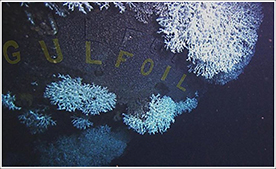Includes Physical and Biological Oceanography and Socio-Economic Reports
The Environmental Studies Program (ESP) is pleased to announce the availability of new findings from eight studies posted online to the Environmental Studies Program Information System (ESPIS) from April-June 2016. Two relate to the Renewable Energy Program, five are from the Gulf of Mexico, and one is from Alaska. The reports and associated technical summaries can be accessed through the enhanced ESPIS, which displays reports with new geo-referencing tools, animation and other new features.
Topics covered include:
-
Two Renewable Energy Programs reports:
- Wind Energy Development on the Atlantic OCS: The Identification of Port Modifications and the Environmental and Socioeconomic Consequences; and
- Visual Impact Evaluation System for Offshore Renewable Energy;
- Five Gulf of Mexico reports:
- Shelf-Slope Sediment Exchange in the Northern Gulf of Mexico: Application of Numerical Models for Extreme Events;
- Biomass and Mass-Balance Isotope Content of Seep Populations on the Upper Slope Gulf of Mexico, Determined from Archived Samples;
- Exploration and Research of Northern Gulf of Mexico Deepwater Natural and Artificial Hard-Bottom Habitats with Emphasis on Coral Communities: Reefs, Rigs, and Wrecks—“Lophelia II” (final report);
- Pressure Wave and Acoustic Properties Generated by the Explosive Removal of Offshore Structures in the Gulf of Mexico: Potential Effects on Protected Species;
- An Analysis of the Impacts of the Deepwater Horizon Oil Spill on the Gulf Seafood Industry;
- One Alaska report:
- Wading Shorebirds Habitats, Food Resources, Associated Infauna, Sediment Characteristics and Bioremediation Potential of Resident Microbiota of Deltaic Mudflats.
BOEM’s ESP develops, funds, and manages rigorous scientific research to inform policy decisions regarding the development of energy and mineral resources on the OCS. The ESPIS makes all completed ESP reports available on-line as full electronic pdf documents, including images and graphics. Technical summaries of more than 1,700 BOEM-sponsored environmental research projects, as well as full pdf documents of over 3,400 research reports, are available for online full text search.
BOEM’s Environmental Studies Program page contains additional information on research opportunities and other aspects of the program. You can also follow our work on Facebook, Twitter, Flickr and our other social media channels.
Dr. Rodney E. Cluck
Department of the Interior
Bureau of Ocean Energy Management
Chief, Division of Environmental Sciences
Environmental Studies Program


